Eco-friendly clothing label from Copenhagen, Gritt & Borris, created by a couple, reflects their mutual pursuit for a greener fashion industry and ethos of minimising fashion's environmental footprint.
By Hanna-Amanda Pant
Read MoreEco-friendly clothing label from Copenhagen, Gritt & Borris, created by a couple, reflects their mutual pursuit for a greener fashion industry and ethos of minimising fashion's environmental footprint.
By Hanna-Amanda Pant
Read MoreThe latest sustainable brand to launch is finding a way to make ethical clothing cooler while remaining under $250 bracket. Meet FAETH by Address Chic.
#AD
Read MoreIn Finland, radical transparency is making waves in the clothing industry. With their seasonless style and Nordic grace, as a new brand in the market, iluut aspires to make ethical design more accessible to all customers. Who would deny introducing a pinch of minimal elegance into their wardrobe? iluut is comprised of a female trio, with their feminine enigma focused on building awareness of affordable slow fashion. Having just launched their web shop in early 2017, we wanted to know more about their journey towards the brave way of entering ethical fashion industry.

iluut, ss17.
Describe iluut's debut collection in 3 words.
Timeless, traceable and affordable.
What are the attitudes circulating about sustainable fashion in Finland?
The Finns are paying more and more attention to making sustainable purchases, especially people living in major cities today show interest in buying clothes from smaller sustainable brands. However, iluut aims to expand further in Europe, and it’s great witnessing sustainable supply increase; there is something for everyone nowadays. We also think we have a great duty of educating people and building awareness of the difference between fast and sustainable fashion. We can’t wait for the day when sustainable brands really make a breakthrough and get a bigger market share. We are working hard for that.
What are the main complications you've faced when setting up iluut?
At the very beginning, it was very surprising how difficult it was to find high quality, sustainable woven fabrics that have been made in Europe. We wanted to find fabrics that are fully traceable; meaning they come to us directly from the farm. We truly appreciate full transparency, because we believe it could decrease fashion’s biggest ethical and environmental problems, such as use of child labour, unsecured working conditions, dangerous chemicals and industrial pollution. In summer 2016, we made a European tour and visited a family-owned Italian fabric manufacturer, Albini. We are proud to say that our customers have so far been very happy with the quality of iluut clothes. Currently we are looking for new sustainable fabric options for the dresses we are developing.

iluut, ss17.
What are the benefits of a minimal capsule wardrobe?
Minimal style looks fresh from year to year, and it’s very easy to combine. That means you don’t need so many garments, because with less pieces you can create many different kinds of looks that last throughout the years. It cannot be a conscious choice to produce something that people won’t wear anymore in a couple of seasons, and that will turn into more waste.
Who and what were the main influencers and influences iluut took note of since its inception?
Our whole team of three ambitious women loves fashion, but thinks that making beautiful things shouldn’t harm people. Last summer, we were fortunate to meet a pioneer designer in sustainable fashion, Marina Spadafora. She has been designing for high-end Italian brands, such as Prada and Miu Miu, before deciding to become a sustainable fashion advocate and a part of the Advisory Committee of the Fashion Revolution global movement; always including a strong social and environmental focus on her work. We take inspiration from people like Marina; people who have started doing things differently to really make a change.
How does iluut differ from many other Scandinavian brands trying to conquer the ethical fashion market?
There are only very few fashion brands that open the whole process of each garment: where the clothes were made and who actually made them. This is something iluut focuses strongly on, and we encourage others to do the same. We have also recently started designing two Spring/Summer dresses together with our Instagram and Facebook followers. We believe people will appreciate the clothes even more, if they can contribute to the process. Our aim is to be an open and collaborative brand that brings joy and value to its end customers.

iluut, ss17.
Choosing an angle to improve social or economic conditions in Third World is widely cherished by brands to make a change in the fashion industry. What's your social mission?
At iluut, we want to work with companies that care about their workers and are willing to invest in them more than just on an average, distant level. For example, when we were looking for an atelier, we were convinced of our choice after finding an Estonian atelier with seven seamstresses, who are paid 40% more than the average workers in the industry. We started working on iluut aside of our daily jobs, and our margins are still low because our mission is to offer affordable sustainable clothes for everyone. How to make our mission happen? We need to rise the volumes and we just took the first steps towards that by opening our web shop, iluut.com. You are warmly welcome to have a look and make sustainable purchases.

iluut, ss17.
What's the best season to be seen in your garments?
Fashion world rotates on the basis of seasons. That’s something we’re thinking differently: surely we’ll have clothes for different times of the year, but we don’t offer seasonal collections arriving two times a year. On the flip side, fast fashion brings new clothes to the market every week, which means compromising the quality and generating a huge amount of waste - both because the garments are not durable and get thrown away, and also because of the unsold stock left in stores. To improve the cycle, our goal is to bring something new to the market only once in around a month’s time, without compromising quality or workers’ conditions. Also, making clothes with a slower approach and seeing what sells and producing according to demand, allows us to avoid producing waste.
Shop here:
Emphasising functionality and wearer’s individuality, Noorism is a young NYC-based upcycle brand remodelling old, discarded jeans into unique, adhoc fashion items. The founder and FIT graduate Noor Zakka was fascinated by turning seemingly valueless rich shades of vintage denim leftovers into lavish luxury pieces that each have their own story to tell. We cannot wait to cocoon into Noorism label’s conscious statement denim this spring — a touch of denim never goes out of style, after all.

Noorism SS17.
What influences have come together in you latest SS17 collection?
I was inspired by the work of Marcel Duchamp and his 'ready mades'. The concept of taking something that is discarded and deemed valueless, and elevating it by turning it into a luxury item that is well-crafted fascinates me.
What brought you to the idea of remodelling old denim?
I wanted to create an ethical fashion brand and vintage denim was easy to find and relatively inexpensive to source. It's also a very classic and universal fabric that never goes out of style and has a such a rich history.
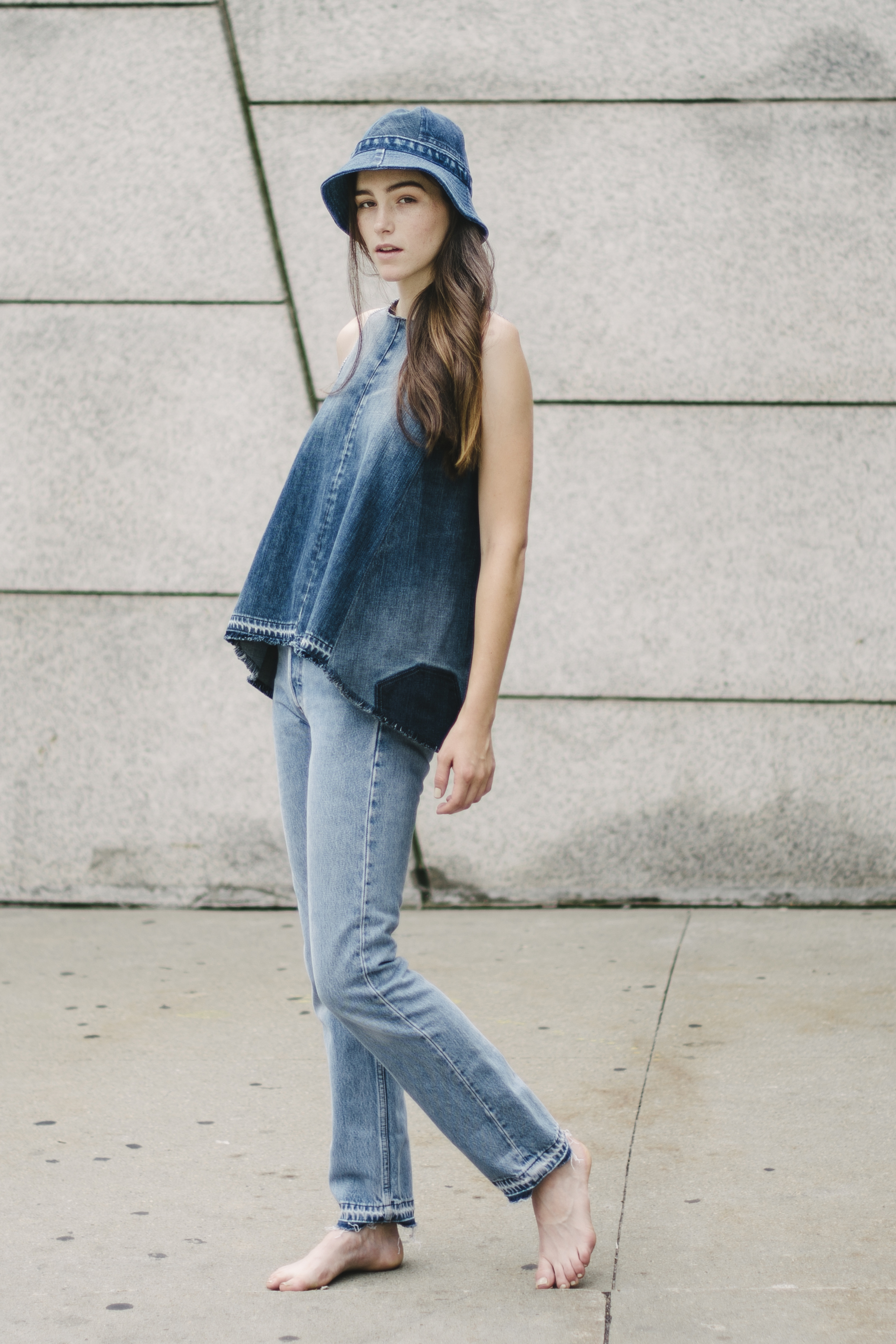
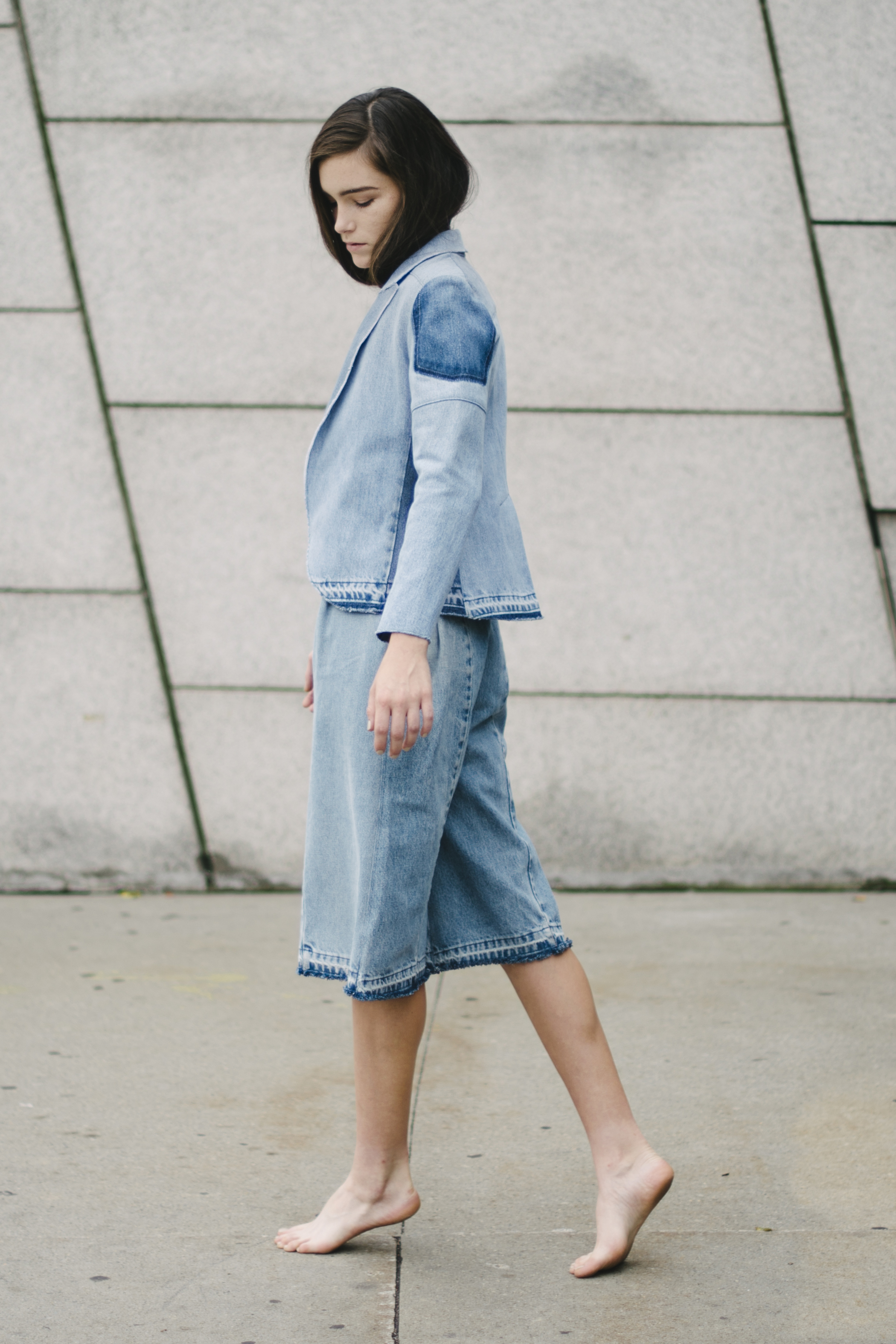
What makes it perhaps difficult to work with denim? What's the most interesting part?
Working with vintage denim can be challenging because each old pair of jeans is slightly different in size, colour and shape. We also have to watch out for stains and it is a labor-intensive process to take jeans apart and re-cut them into new styles. The most interesting part is finding all the different vintage pairs and also the beautiful shades and marks that show once we take off the original pockets and undo the hems.

Noorism SS17.
What inspires you in your creative direction?
I am inspired by traveling [I went to Italy and Puerto Rico recently], books I read [I just finished reading Just Kids by Patti Smith], living in Brooklyn, Museum exhibits and also by sustainability. I am constantly striving to discover more things I could be doing, such as the idea of zero waste fashion, and also by creating styles that use up my own scraps.
Describe the Noorism woman in a few lines?
The Noorism woman is independent and strong. She cares about the environment, loves denim, loves vintage, but wants high quality pieces that are special and will last a long time in her closet.
Shop here:
You eat your greens and frequent local vegan cafes, you practise yoga, you religiously study the heaps and heaps of gifted slow living books lying on your kitchen counter as if aligned in a military order, but as a crucial part of ethical living, have you ever thought of giving up wearing leather entirely? That is no news leather is a by-product of the food industry, and treated with toxic chemicals to pass it on to the fashion industry, which can carry several health risks to the producer, the wearer and the environment. If that's not a fair enough reason to reconsider your next haul to the leather goods hall, we do not know what is.
Luckily, brands, such as London-based Bourgeois Boheme, have made boycotting the widespread use of unethical leather goods a degree easier, by offering trendy footwear in various vegan, non-leather alternatives, such as plant-based polymers and Piñatex, the latest invention made of pineapple leaf fibre. We promise, when going entirely 'vegan' in footwear choices, you really do not have to compromise the looks, whereas reasoning ethical choices to your peers has become a tad self-explanatory. I had a chat with Sophie Yiannouris from Bourgeois Boheme to find out why the ‘vegan’ shoe trend is still celebrating its peak success, constantly looking to evolve and adapt to new ways of improving its own cherished DNA.
Words: Hanna-Amanda Pant

Bourgeois Boheme AW16: Shaun Black & Petra Black.
What are the 'vegan' alternatives to leather you offer at Bourgeois Boheme? Where do the materials come from?
Style, quality, durability and eco-friendliness are equally important factors in the making of a BB shoe. Therefore, we continuously seek out for new material innovations to ensure we stay on top of the environmental game. Whereas the leather-imitation shoes you find on the high street are often made with PVC (a plastic which contains chloride and isn’t biodegradable), we use a high-quality, Italian-made cotton-backed microfibre PU (polyurethane) called Mycro©. The Mycro© is a state-of-the-art microfiber with a structure very similar to that of natural leather and suede. Its softness, lightness, breathability, water and stain resistance provide high performance, comfort and very credible leather-looking shoes! We use this for our uppers.
Another ground-breaking material we started using for our AW16 collection and will continue is Bio-polyoils. These are plant-based polymers derived from natural renewable sources — grains and seeds derived from food-free cereal crops rather than petrochemical origin. At manufacturing stage, these cutting-edge fibres keep CO2 emissions at zero level. This material is breathable and absorbable and perfect to use for the linings of all our shoes.

Bourgeois Boheme SS17: Keith Black Pinatex & Noel Black Pinatex.
For SS17 launching in May, we are thrilled to introduce a range of styles made with the exciting new vegan leather alternative Piñatex™ - a natural and sustainable non-woven textile made from pineapple leaves fibres. These fibres are the by-product of the pineapple harvest and therefore no extra land, water, fertilisers or pesticides are required to produce the material. Piñatex™ resembles a textured leather and is soft but strong, light and breathable.

Bourgeois Boheme SS17: Kim Cork.
Being introduced in our SS17 Collection as well, will be the Cork material. Sourced locally from cork trees in Portugal, our new cork material is a plant based renewable, breathable and natural resource, which is perfect for dressing our new unisex sneakers and the insoles of our shoes.
Why should we consider giving up leather goods and look for alternatives to take over our shoe and accessories collections?

Bourgeois Boheme: Making of.
We believe in order to give up leather you need to know the environmental and cruel impact it has. People often ask us why leather, as a natural material, is not a better choice than the synthetic vegan alternatives we use. We say that the leather used for fashion, unfortunately, is not very natural at all (and far from always a by-product from the food industry). Toxic chemicals such as zinc, lead, dyes, cyanide and formaldehyde are used to treat it, which makes it decompose very slowly, producing a greater quantity of refuse which has an obvious negative environmental impact. In addition, tanneries consume a lot of energy and are very polluting; and the carcinogenic chemicals used negatively affect the health of workers, too. We believe that alternative, innovative and environmentally friendly materials are the future and better than the toxic leathers and PVC’s frequently used to date. All the alternative materials are strong, breathable, durable and water-proof, which is another reason we think these could be a better choice to leather.
What are the nuances that matter in the production of an ethical shoe?
As much as we believe that animals should not be exploited for our fashion needs, we also believe that a good vegan and ethical shoe should be ethically produced for the general wellbeing of the planet, and to ensure the wellbeing of our talented shoemakers that handmake our shoes.
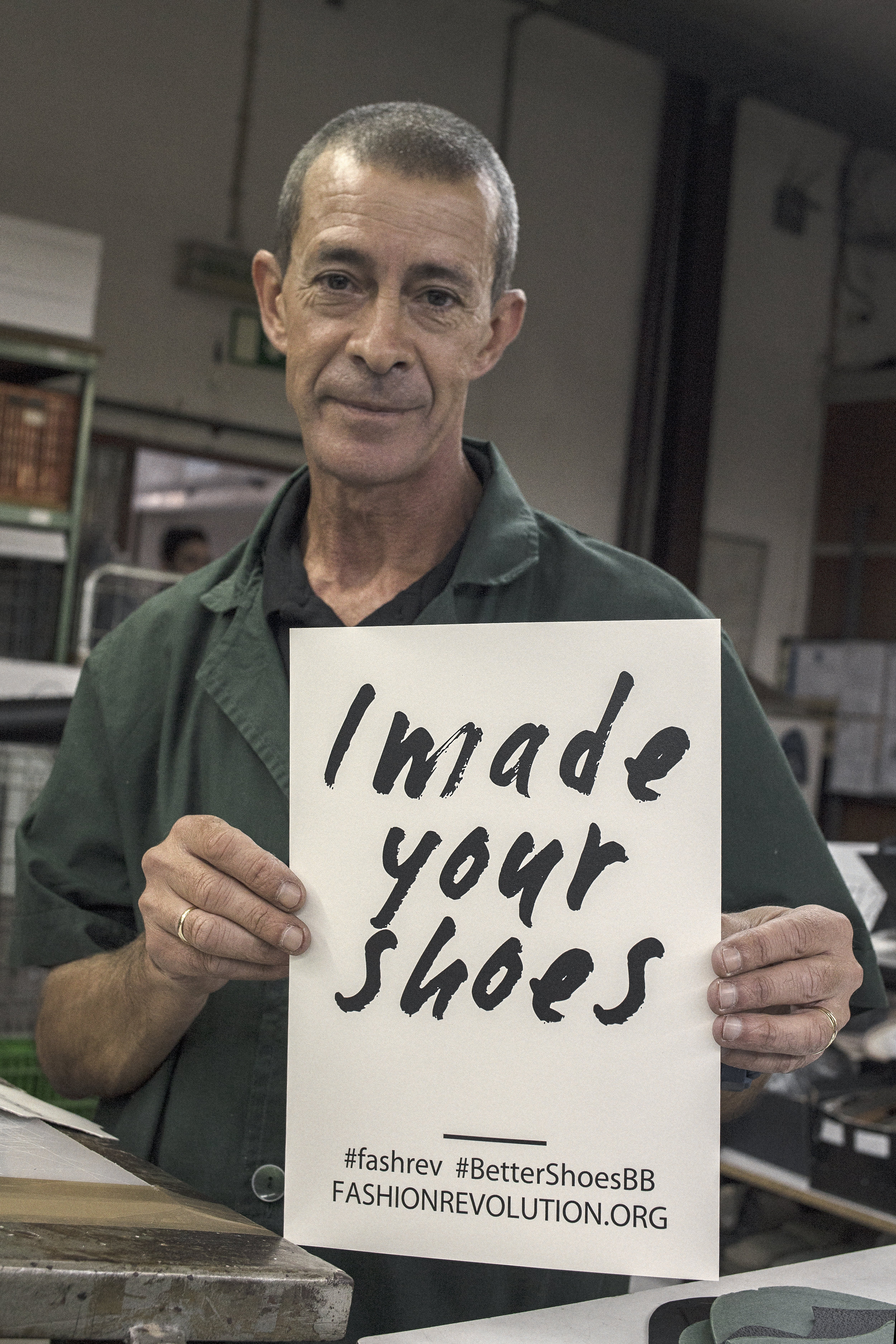

Our skilled Portuguese artisans craft each pair by hand using traditional techniques. First, the upper sections of the shoe are cut and stitched together and any linings and other design details added. The upper is then moulded into the shape of the shoe using a specially made last, creating a distinctive shoe shape for the first time. Next, the insole goes on and the upper is stitched and/or glued to the sole using non animal-based glue. The finished shoe is polished, checked and placed in our beautiful branded box, ready for the journey to London and beyond.
Visiting our factories personally is important to us and founder Alicia has handpicked the three ethical factories we work with herself. We meet the teams of artisan craftsmen and women who are responsible for making our shoes to ensure high standard production and working conditions.
You mentioned Pinatex as a part of your new footwear collection. What are the benefits of this new material and why should we consider wearing it?

Bourgeois Boheme SS17: Victoria White Pinatex.
The Pinatex material is a new innovative material discovered by the company Ananas Anam. With the help of skilled Philipino workers, they extract the fibres from the pineapple leaf plantations. This process supports Phillipino communities to grow their businesses. These fibres are the by-product of the pineapple harvest and therefore no extra land, water, fertilisers or pesticides are required to produce the material.

Bourgeois Boheme SS17: Victoria Natural Pinatex.
Then they are transported to a factory in Spain to transform into the strong, breathable and water-resistant material that we are using for our limited-edition collection launching in May 2017. It a unique and great alternative material to leather, which has not been used a lot so far. During the launch of our Pinatex collection we will be hosting a week-long pop-up shop in London to promote this amazing alternative material and also promote sustainable fashion for men and women in all its glory.
Shop now:
Looking for something to light up your interior design dreams? Something timeless, yet modern? Something bold, yet subtle? Estonia-based HIIS Design furniture stunned us with their effortlessly elegant design furniture made sustainably, with a dash of care and love. To shed light on HIIS Design’s innovative creations, young furniture maker Tõnis-Sander Maarits opened us a door to his creative workshop...
Words: Johanna Raudsepp

HIIS Design furniture, 2016.
What’s your personal take on furniture? What makes a piece of furniture excellent?
The attractive outline, not only at the shop or in pictures, but in the interior where it’s used. Comfort and simplicity, while having down-to-the-tiny-detail design and quality combined, make a piece of furniture a great one. Something made from heart is not just another piece of furniture, but creates an exquisite experience in a room. Take a table, for example – it’s not just some thing to sit and dine at, but it creates a heartwarming shared experience with your friends and family. Good design can help enhance that feeling.
How does HIIS Design apply ethical practises in your workshop? What’s particularly important for you?
The most important thing in furniture manufacturing is that quality and timeless design [are there]. When a design piece lasts you ages, fitting in with the old and the new, it becomes an environmentally sustainable piece. HIIS Design is for someone who values quality and wants an enduring piece of furniture to bring into their interior that lasts for years. We aim to create furniture that can be the anchor-point in a room, around which you can design everything else.
As wood production can be harmful for our environment, we make sure to use FSC certified wood as our resource. For Hiis Design, it’s of high importance we use consciously produced wood to ensure forests lasts for future generations. That also reflects in our name (’hiis’ in Estonian translates to ’ancient grove’).

HIIS Design furniture, 2016.
Is there a personal story… how did HIIS Design come to be?
As a young boy, I used to make ships and other toys in my father’s wood workshop, hammer and chisel in hand. When I was 13, we moved to a new house and I didn’t have any furniture in my new room. That’s when I decided to design and make my own furniture. I made a pretty good bed, which gave me more drive to build other things, like a closet. Every summer I used to earn pocket money from furniture making and restoration. At first, in 2013, fresh out of university, I started my own custom-made furniture workshop, but I always felt like it was not enough for me to build things designed by other people. I began to experiment more with my own designs and one thing led to another, as they say. In spring 2016, HIIS Design was brought to life.

HIIS Design furniture, 2016.
With regards to environmental protection, how do you imagine the future of furniture design?
Endurance is what makes furniture environmentally friendly. An oak table will last generations, unlike a cheap mass produced equivalent from melamine. A toxin-rich piece of furniture will last 10 years at most. But an oak table will last you until a new, baby-oak is growing, reducing environmental damage. More materials will be used, of course, and a lot of new solutions to battle space deficiency. However, we must not undermine natural materials and living in harmony with nature. I find that people are starting to value earthiness and natural things even more [in furniture design]. Families with kids, especially, want to be able to make more sustainable choices when choosing products for their homes.
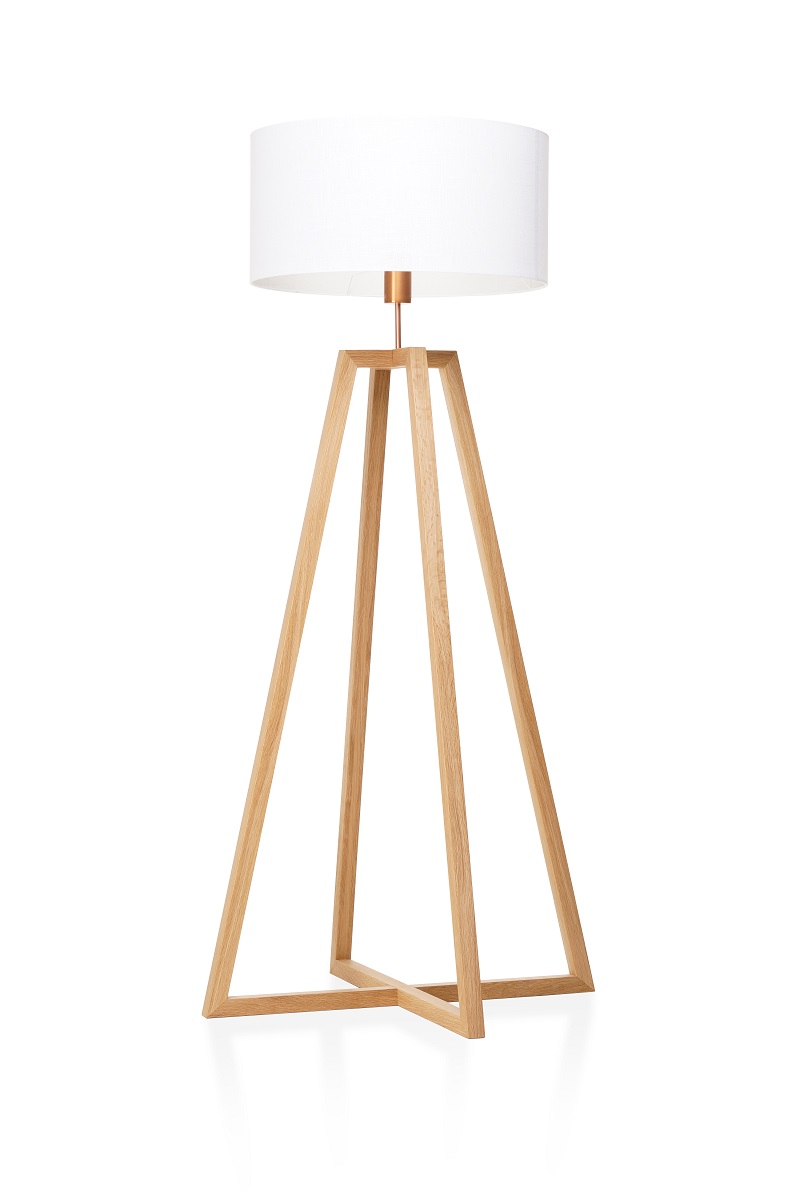
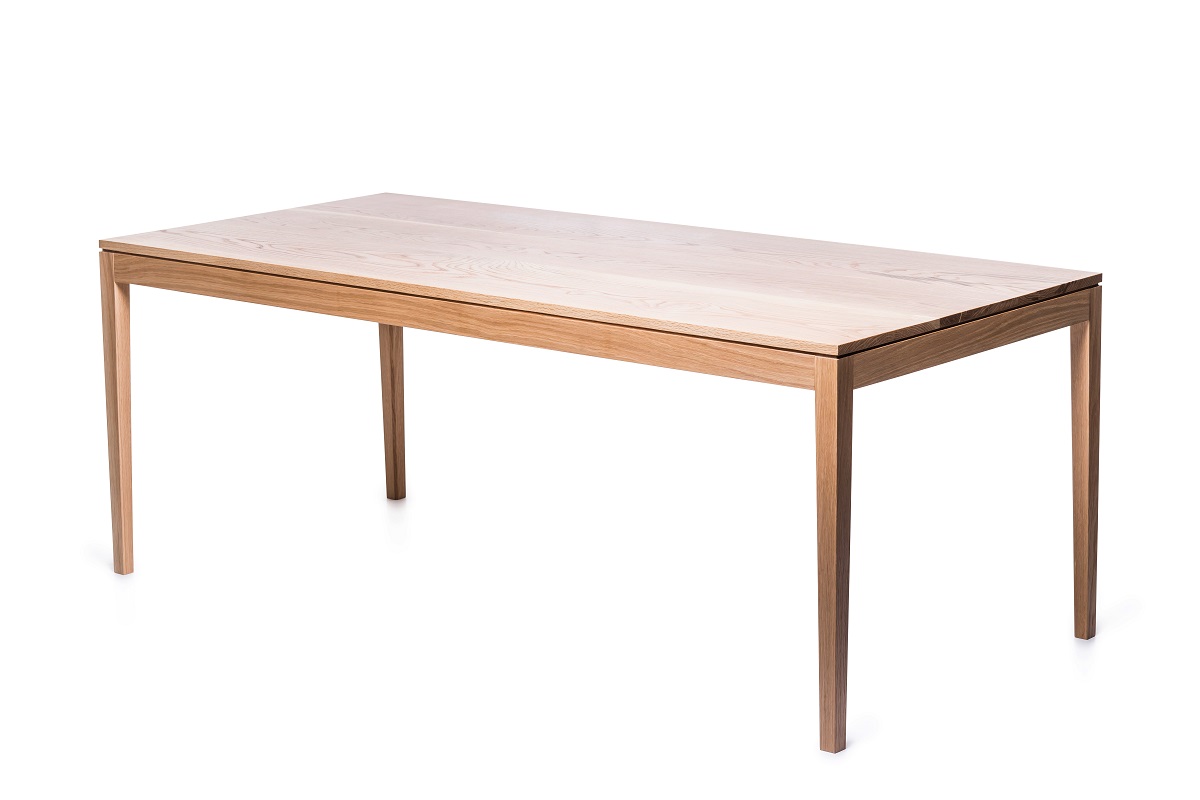
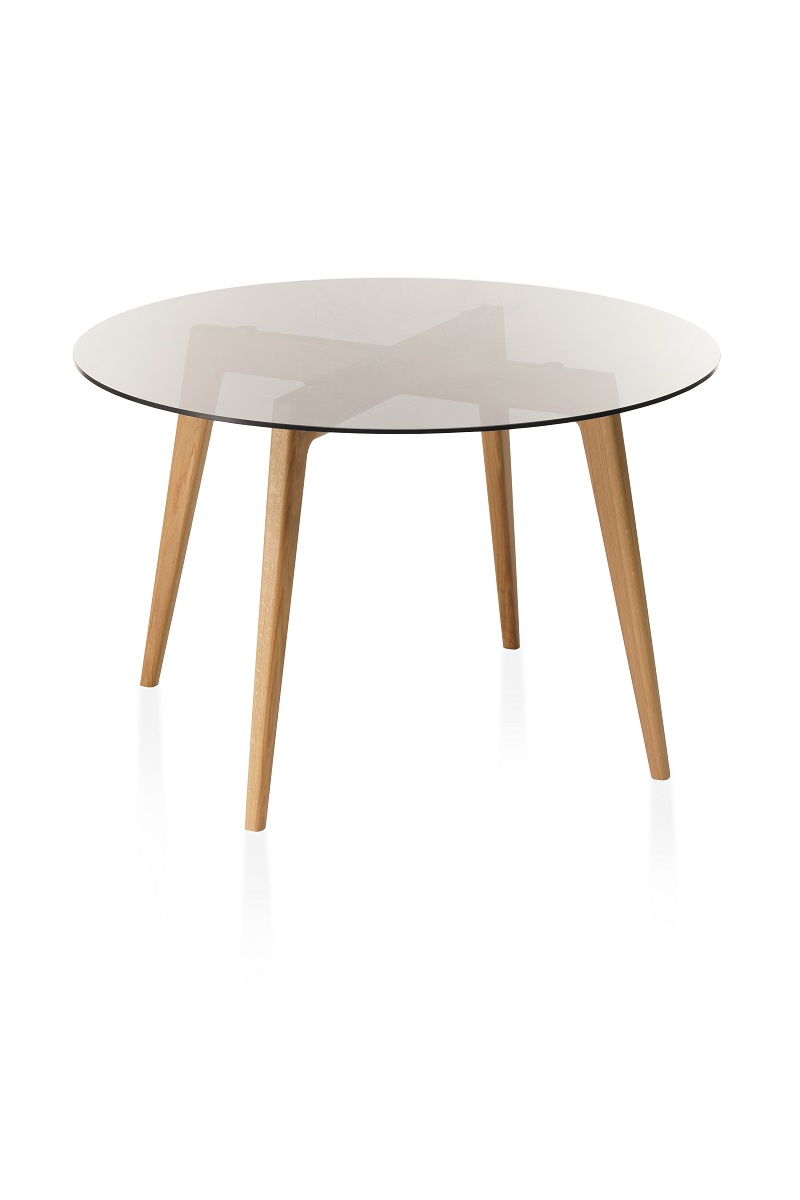
If your brand has a soundtrack, then what would it be like and why?
The first song that popped up in my head was ‘Thunderstruck’ by AC/DC. Probably because I often listen to that song, when I start my day at the workshop. It creates a nice energy and gets you going for the day. But that’s only a small part of our brand. HIIS Design’s soundtrack would be ‘Spiegel im spiegel’ by Arvo Pärt (Grammy-winning Estonian composer), because when I listen to that piece I find myself in a powerful state of creativity. As the title suggests, a mirror against a mirror reflects into infinity, the same way inspiration has no boundaries.
Where do you draw inspiration from for new pieces?
Inspiration can strike at any moment, which is why I always carry a notebook along. Even a quick sketch right there in the moment can be a life-saver of a striking flash-idea. I feel like inspiration is deep inside of us, piling up in our sub-conscience since childhood, and is often brought onto the surface again by some small trigger in our adulthood. It’s important to capture those moments and know how to fuel them. I like to get my creativity flowing by going through old books, magazines and websites. Other times, I draw inspiration when watching a movie or a TV show – like Mad Men, where the 60s American-style surroundings can fire up some great memories.
For the London-based textile designer Nelly Rose, on top of placing elements of traditional craftsmanship and up-cycling in the centre of her eccentric textile artwork, the power of collaboration is key. The main themes running through her expressive textile lines are female empowerment and creating a ‘voice’ through her conscious craftsmanship. Nelly Rose is extremely concerned about the de-valuing and vanishing of traditional techniques that should be cherished and preserved instead. Through her vibrant, empowering prints — forever, if we may.

Photo by Marilu Venditti.
What led you to sustainable approach in textile design? How unique is your approach in London vs on a wider, global scale?
I have studied Print, Knitwear and Embellishment, and all of these have led me to make more conscious decisions about the materials I was using and where the techniques derived from. In London, my approach is very much inspired by the concept of 'upcycling' and DIY-culture. On a global scale, my work is lead by my curiosity and passion for handcrafts and discovering their origin; nothing excites me more than being able to include them in my collections. I am currently exploring Japan, absorbing the culture and discovering all kinds of beautiful craftsmanship [from the region].
What are the values your brand encompasses? What are the main themes you are keen to explore?
My values as a brand lie in working on projects which focus around female empowerment and creating a voice through a creative medium. I have worked in various projects from ‘shop window stitch-ins’, raising awareness about the Rana Plaza factory collapse, to the first modest wear runway collection in the UK made entirely in artisan houses in Indonesia.
I tend to use a lot of typography in my work, which I guess contributes to the idea of raising a ‘voice’. Overall, the main themes I explore in my work are: Handcraft, Messages and Storylines, Protest and Equality, Printed Textiles, Creative Campaigns.

Photo by Marilu Venditti.
How does Nelly Rose as a person and as a brand differ, if at all?
Interesting question! I would say my personality as Nelly Rose mainly focuses on networking and bringing people together, who have similar mindsets about changing the world in creative ways. I guess Nelly Rose is my rainbow vision, my compassion and my voice. The brand I strive to create is my expressive vision of what I consider to be ethical in my own way, whilst still being loud, bold and a little eccentric.
Your work was recently showcased at the Green Fashion Week in Milan. What does the experience mean to you?
Green Fashion Week was a brilliant experience as it fused together my interest in global climate change, as well as having fashion at the forefront. The new collection I showed was of hand painted up-cycled garments, ranging from denim to leather, which I salvaged from a textile waste plant. My highlight of the experience was the photo shoot I directed at the Bosco Verticale alongside designer Silvia Giovanardi. It fused the relationship between sustainable fashion and architecture, and it was very inspiring to witness my work being a part of that.
Although I love the ‘calendar’ fashion weeks, I also have to express my love and connection to other global fashion events such as AFWL (Africa Fashion Week London) and the recently participated in GFW. I find that there is an open dialogue and a more personal level of fashion presented.

Photo by Marilu Venditti.
What are the most meaningful collaborations you have done so far? What do you consider perhaps your biggest accomplishment?
I consider my biggest accomplishment to date the Co-Identity collection which has been showed at the Jakarta Fashion Week and then London Fashion week via Fashion Scout. The collection was a collaboration with Dian Pelangi and Odette Steele in which involved fully immersing myself in Indonesia as an inhabitant and creating the textiles for the full 24 Looks of Modest Womenswear. These consisted of fully hand rendered techniques ranging from hand painted gowns, Batik and Songket weaving.

Making of: Nelly Rose Artisanal Textiles.
What irritates you about the fast fashion industry? Why do we need a slower approach?
The fast fashion industry irritates me mainly because of mass consumption and the de-valuing and plagiarising of traditional techniques. I believe in a slower approach to prevent the de-humanisation of garment workers in the supply chain, thus preventing the capitalisation of poverty. We take such an avid interest in the ingredients that go into our body or our pharmaceuticals, so I don’t understand why we don’t have the same mindset about what we wear on our skin. The industry deliberately makes it hard to question, and easy to ignore, so it is imperative we constantly ask #whomademyclothes.
Do you personally feel it is more difficult to deliver work using ethical and artisanal approach?
I believe that in order to deliver a luxury product, there should be a transparent process. In my personal work, the initial process is more difficult, as it can be more costly as a young emerging designer; however I am constantly trying to inform myself in ways I can maximise the artisanal approach. I have a vision of working with artisan communities across the world to collaborate on beautiful creative outcomes, and I will carry on finding the most efficient ways to deliver these collaborations.

Nelly Rose, credits: Laila Cohen / Imprint Magazine.
How would you categorise yourself in the fashion world? What's the most important message you aim to deliver as an artist?
I predominantly refer to myself as a designer because I like to create wearable pieces which tell a story. However, as designer refers to the process prior to a piece being created, I also refer to myself as a creative director because I love to work with a concept in various forms, such as film and installation. Ultimately, I aim to deliver an outcome through the power of collaboration, which reflects the journey and honours the craft.
By Signe is a Danish fashion brand dedicated to catering honest and feminine easywear for the independent and creative woman in a modern society. By Signe stands out not only by its clean candy-coated aesthetics and having the whole honest production process from A to Z taking place under one roof, but also seeing women as artwork that should only be wrapped in the dearest delicate comfort...

By Signe Lookbook AW16.
How would you classify the woman By Signe is meant for?
Actually, describing a muse like this is a bit unnatural for me, because I never wish to exclude or discriminate. But I am inspired by natural women who are more art than beauty. I am inspired by independent and creative women, and I wish to create healthy and comfortable garments for the natural woman in a modern society.

By Signe Lookbook AW16.
What was the main catalyst leading you to create a sustainable brand?
I have a huge conscience, so when creating the brand, it was essential for me to create a product that I could vouch for 100 per cent. [I was motivated by the concern that] the fashion industry is one of the most polluting in the world. By setting up my own production in-house, I wish to prove that it is possible to combine design and handcraft based on ethical principles, in order to create a deeper dimension of honesty and soul behind the brand in today’s industry.

By Signe Lookbook AW16.
What are your personal tips for looking good, but consuming less?
I would encourage the consumers to build a beautiful basic wardrobe of organic clothing. These garments, if chosen well, should be long-lasting and live through several seasons. Also, I would ask everyone to recycle and donate instead of throwing anything away.
How does By Signe stand out from other responsible fashion brands out there?
By Signe definitely stands out for having gathered the entire design process under one roof. Our creative studio is located in extension of our production — cutting, finishing and packaging area. This ensures full control of all parameters and the required quality of the entire process.
Our in-house Danish production ensures absolute ethical security in a non-discriminating, healthy and safe environment. We cover everything around the garment sustainably too, such as size and care labels, which are handprinted on organic cotton. All sewing thread is made from organic cotton. Hangtags, printed material and packaging are made from recycled and recyclable paper.

By Signe Lookbook AW16.
Your branding is sophisticated, yet simple and unique. Where did you take inspiration for Creative Direction for Signe?
My own personal aesthetics are directly reflected in the visual profile of the brand. This comes from constantly being open for inspiration and developing it over time. I find inspiration mostly from old books, poetry, photography and travel, and I combine this with my passion for luxurious soft organic materials and comfort.

By Signe Production Studio.
If you could make one major change in the fashion industry today, what would it be?
This could be really abstract, as my first priority would be to make sure that everyone involved in the entire industry is treated well. It would include many more larger changes, obviously, as all is connected. We strive for all fabrics to be organic and certified by The Global Organic Textile Standard (GOTS) which is recognised as the world's leading processing standard for textiles made from organic fibres. GOTS defines high-level environmental criteria along the entire organic textiles supply chain, and requires compliance with social criteria as well, such as freely chosen employment, no child labour, safe and hygienic working conditions, payment of living wages and reasonable working hours.
ELLISS is a London-based responsible brand focusing on organic jersey wear. The collection 'Unconsciously Conscious' speaks of choosing responsible clothing unconsciously for its aesthetics rather than merely ethical production. Their vintage-inspired jersey wear, using ultra nostalgic silhouettes, sported by vulnerable looking girls, is not only visually appetising, but out-of-this-world comfy, too. Even so much so, we want to keep it close all winter long...

ELLISS 'Unconsciously Conscious' lookbook, 2016.
How does ELLISS connect sustainability and fashion?
We use organic materials and manufacture in England to maintain a low carbon footprint and are conscious of every element of the design process to waste as little as possible.
What are the main aspects ELLISS as a responsible fashion brand looks to improve?
I would like to show that sustainable fashion can be stylish. The design is very important to me. I want people to buy the clothes because of the way they look, rather than just because they are consciously made. The collection is called ‘Unconscious Clothing’, I want the women who buy my clothes to not necessarily be looking for something eco-friendly, but to choose a piece because of the design – to unconsciously be conscious.

ELLISS 'Unconsciously Conscious' lookbook, 2016.
Why is it so difficult to get something responsible manufactured in Britain?
It isn’t difficult to have things responsibly manufactured in the UK as you can oversee the production. However, it did take time to find the right factory. The options are few, but I am lucky to have found a factory I can work closely with. The price is slightly higher in the UK than abroad, but the quality is fantastic.
What inspired the creative direction for ELLISS? Who is perhaps your muse?
The creative direction has happened very naturally from working with great teams on the shoots. Amy, the model in our lookbook, is incredible — she has the ability to look so vulnerable and confident at the same time. That is something that is important to me, to show women in a natural way. We just released a behind-the-scenes film of the launch presentation, which is a candid look at the girls, the playful, real moments.

ELLISS 'Unconsciously Conscious' lookbook, 2016.
What personally bothers you the most about fast fashion? How can we still look good with less?
The waste — the nature of the way people buy clothes needs to change. The best way to shop is to buy less, but pieces you really love. Curate your wardrobe.
How much importance does sustainable living have in your everyday?
It plays a big part in the way that I think. I like to buy vintage clothes – that is one of the reasons I decided to focus on jersey wear. Vintage shopping is great for a trousers and outerwear, but when it comes to lingerie and T-shirts – you want something fresh and new. I love wearing matching jersey underwear and a soft T with a pair of vintage jeans.

ELLISS 'Unconsciously Conscious' lookbook, 2016.
What makes it tricky to have an entirely Made in Britain clothing brand?
Manufacturing in the Britain is more expensive, but it means that you have control of the production and can see everything that is going on throughout the process. I think it is important for the customer to know where their products are coming from.
NYC-based Starch Slides is a unique footwear brand that has mastered crafting the perfect slide-on shoe, whereas proudly pairing the sustainability element of up-cycling men’s shirts with vegan leather. At Starch Slides, individuality is the key — no other pair for ‘the girl on the go’ looks the same, ever. Savant talks shoes and sustainability with its founder Shannon Crowley.

Starch Slides 2016.
Particularly considering the environmental impact, what informed the creation of Starch Slides?
As I come from a retail buying background, I wanted to bring a brand to life that was eco-friendly without looking entirely “granola”. I woke up in the middle of the night with the idea of up-cycling men’s shirts as shoes, and I sketched [my vision] and took it from there.
What's your personal relationship with sustainability? How much does it reflect in your brand?
Starch Slides is very much my personal style — they are cool, effortless, comfortable and original. I have always been aware of green living, watching my waste and hoping others do the same. I think even doing little things make a huge difference over time, and not being sustainable is irresponsible at this point. Little things, like skipping the plastic produce bag when buying oranges, using a refillable water bottle, and washing and reusing plastic Tupperwares when ordering take-out can make a big difference.
Your design philosophy is to create a unique, one-of-a-kind pair of shoes that no one else has. Describe the woman who starts her morning routine wearing Starch Slides…
The Starch Slides girl is a girl of any age — our audience ranges from 17 to 60. The prints of a men’s button-up shirt resonates with all ages, as the shirts are so classic. A big trend has been for mothers and daughters to each get a pair (different styles, of course), the style of slides is so simple that the shoe really changes personality based on the shirt we used to make it. They are for the girl on the go — simply slip them on and run out. Also, they come in a reusable backpack and take up little room in a suitcase, so they are a perfect travel shoe. I bring at least 4 pairs to every vacation I take.

Starch Slides 2016.
Could you elaborate on the concept of 'vegan' leather?
Vegan leather is made of polyurethane — it is durable, playable and breathable. We use vegan leather because we want to have as small of a carbon footprint as we can possibly get. We bind the fabric from the shirt to vegan leather so your foot stays secure and the slide is very durable. Trust me, I am bashing through the streets of NYC and I have yet to wear through a pair, and I am not easy on shoes.
What's your opinion on the fashion and footwear industry exposing itself to a greater degree of transparency? Is there still a long way to go to acting completely green?
I think that consumers are doing a great job of asking questions, this is leading brands to expose the truth behind the process of their factories. I do think many brands are taking strides where they can to become green, which is a wonderful thing to see. We have a long way to go, but I think we will get there in time.
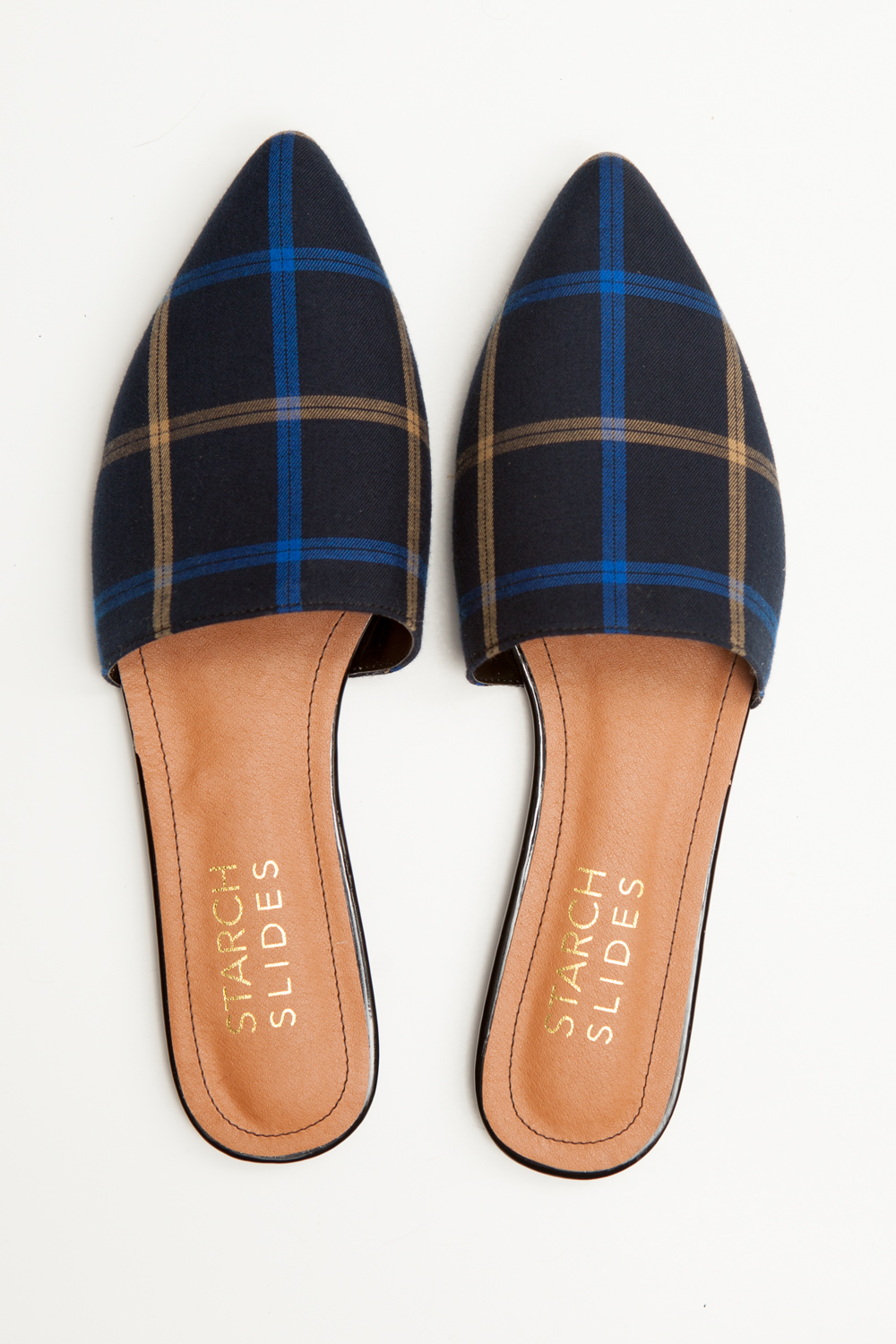
What do you hate the most about the mass production of shoes? What makes creating a sustainable shoe difficult?
I hate the cheap prices of mass produced shoes. It’s hard to work so hard to make sure your shoes all have their own, unique personality, then walk in a store and see shoes on sale for less than lunch. People need to continue to remind themselves, “who is getting paid?”, when they see prices that are too cheap to believe.
What's the type of shoe you hate to see or wear? What makes a shoe beautiful?
I have thought I dislike many styles of shoes, then I see a woman rocking them and looking totally cool. This has taught me not to judge. I definitely have my own style, it is rocker/boho. When I am not in slides I am in sneakers or motorcycle boots. I live in New York City and always need to be in outfits that transition from day to night, [that are] easy and understated. So Starch Slides are the perfect shoe choice for this girl on the go.